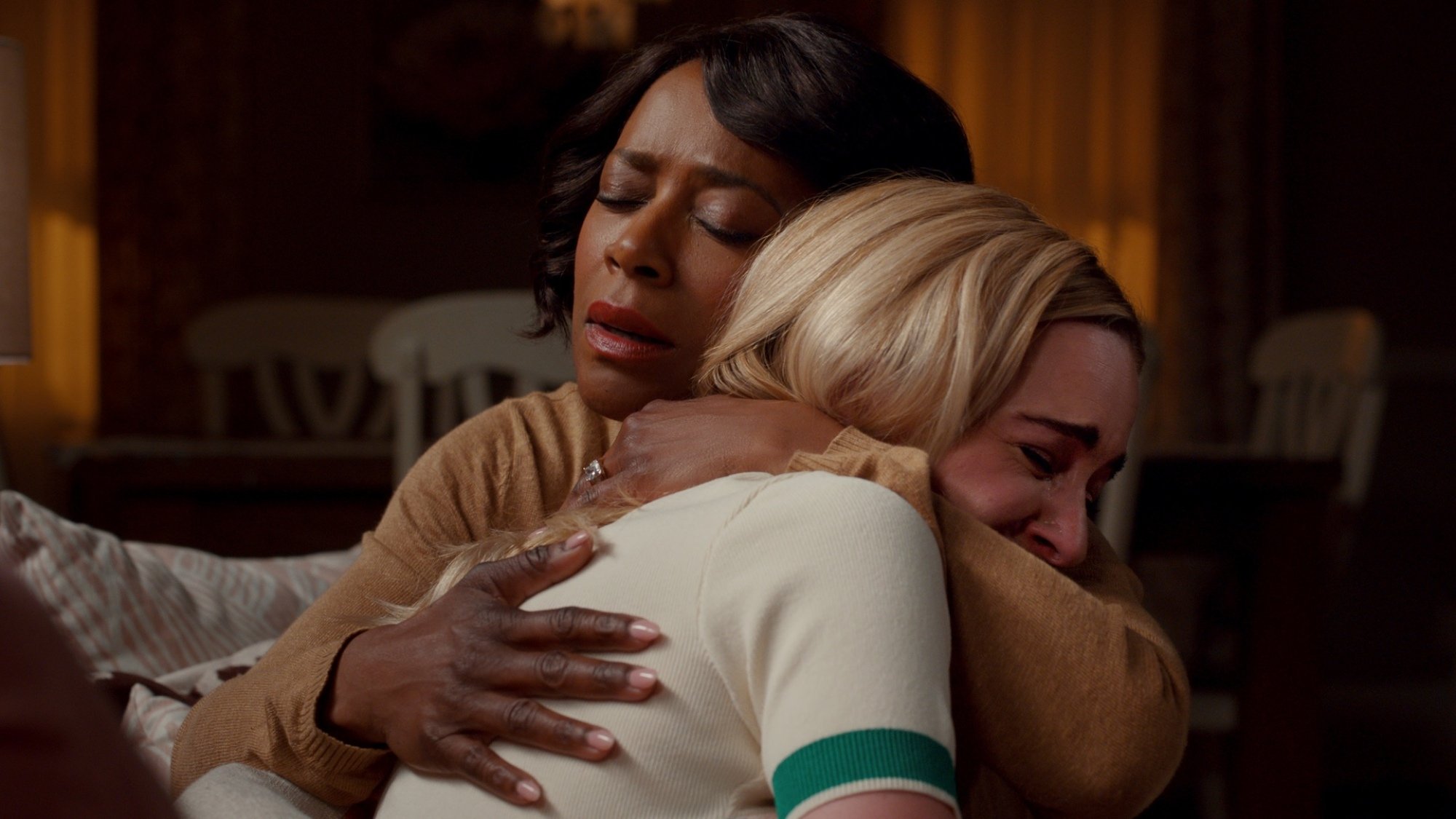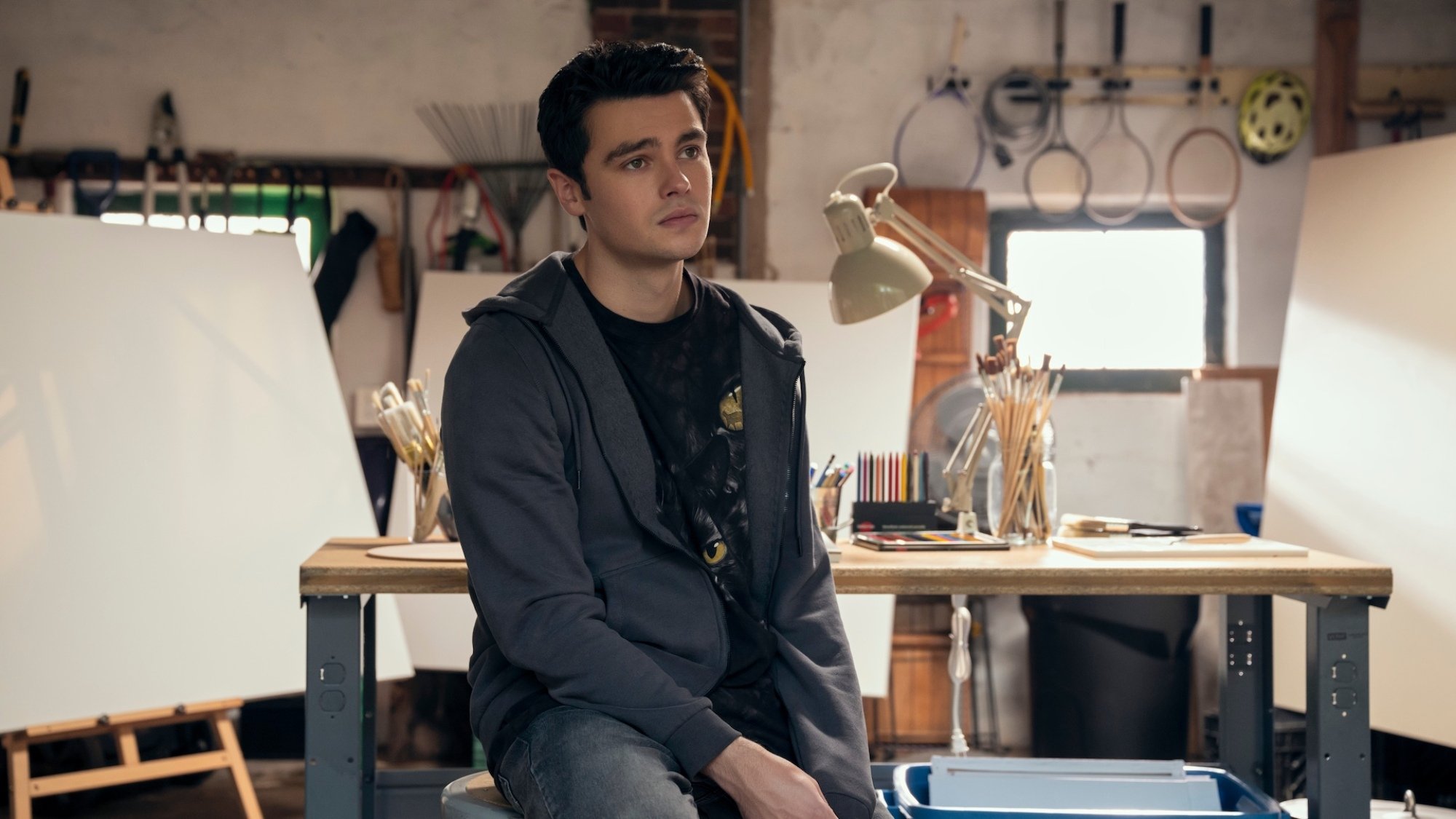Netflix’s Ginny and Georgia had a rocky start from insensitive jokes about seizures to the infamous “Oppression Olympics” scene and being called out by Taylor Swift. However, two seasons later, Sarah Lampert’s series has evolved into a show that, while still delightfully chaotic at times, provides one of television’s most authentic and nuanced portrayals of mental health — in particular, depression.
Over its run, Ginny and Georgia has evolved from a mother-daughter dramedy into a powerful vehicle for mental health discourse. The series follows single mother Georgia Miller (Brianne Howey), her biracial teenage daughter Ginny (Antonia Gentry), and son Austin (Diesel La Torraca), who move to the picturesque town of Wellsbury, Massachusetts. Despite her projected positivity, a harsh past shaped Georgia, with the protagonist experiencing childhood sexual abuse, domestic violence, poverty, and teen pregnancy, not to mention sending two of her ex-husbands into the afterlife (one intentionally, one accidentally).
But she’d be damned if she let her children endure any of the same struggles, whatever toll it takes on her own mental health.
Both leading mental health advocacy organisation Mental Health America and registered psychologist Dr. Taji Huang, who specialises in self-harm behaviour, weighed in on every script and episode involving mental health. Through characters like Georgia and Marcus (Felix Mallard) the show portrays the complexities of mental health and debunks stereotypes. It reminds us that everyone can be fighting an invisible battle. Someone’s exterior can say they’re OK but inside they’re begging for support.
Ginny and Georgia Season 2 concluded with Georgia being escorted in handcuffs from her fairytale wedding to the town’s mayor, Paul Randolph (Scott Porter), accused of another man’s murder — this time, Tom Fuller, Georgia’s terminally ill neighbour. And while most episodes of Season 3 focus on Georgia’s court case — arguably a weakness for the season — the series takes time to peel back the layers of characters it has spent seasons building.
Ginny and Georgia digs deep into the different experiences of depression

Credit: Courtesy of Netflix
While series like The Fosters, Sex Education, Heartstopper, and Skins have explored teen male anxiety and depression, few shows have dedicated as much screen time to it as Ginny and Georgia through Marcus’ character arc. That’s despite the crucial reality that 22.3 percent of boys aged between eight and 16 have a probable mental health disorder according to NHS England data. Having confided to Ginny about his depression in Season 2, Marcus continues to navigate it in Season 3, describing his mental state in episode 6: “You can’t outrun a shadow, especially when that shadow lives in your head.” Ginny and Georgia uses its exploration of teen male depression to challenge stigma around masculinity and mental health, and show the many different faces depression can take.
In Season 3, the spotlight is shared between Marcus and Georgia’s experiences with depression, as we uncover more of her past and see beyond her carefully crafted exterior. Through Georgia, Ginny and Georgia demonstrates how mental health challenges don’t discriminate based on outward appearance — even the most seemingly unshakeable individuals battle internal demons. British mental health charity Mind found that only 46 percent of women were confident talking about their mental health in comparison to 54 percent of men. Like many characters this season, Georgia’s forced to confront difficult truths, including the unhealthy coping mechanisms she’s developed to survive — mechanisms that have influenced her parenting. When Georgia learns that Austin witnessed her kill Tom, she spirals. This discovery shatters Georgia’s self-justification for her actions as necessary to create a safe life for her children. “I failed. I wanted to give you a good life. I wanted to open every door for you that never opened for me,” she tells Ginny. “It wasn’t some outside force. It was me. I did it.”
Georgia finds the words to describe her experience with suppressed trauma and depression through talking to Marcus about in episode 6, saying. “I haven’t felt like this since I was a kid, I’d forgotten. But it’s like it had been waiting for me.” Specifically, Season 3 explores how intergenerational trauma — the passing down of psychological or emotional trauma — creates a cycle that impacts multiple generations, even when one tries to break free from it.

Credit: Amanda Matlovich / Netflix
Ginny and Georgia is not the first show to explore this. Shows like Unprisoned examined how trauma flows from parent to child to grandchild, and This Is Us revealed how unprocessed pain can lead to fear-based decisions affecting everyone around you. Pachinko and Dear White People explored intergenerational trauma through the lens of racial identity and the different responses to trauma and survival. These narratives rarely delve so deeply into a young person’s perspective despite it being found in a 2015 study that depression rates were 1.7 times higher among the children of women who experienced severe child abuse compared with children of mothers who had not endured such abuse. In Ginny and Georgia, this is explored in the final episode as Ginny tells her mother: “You think it’s all on you. But it’s not. We carry the weight too. We always have.”
Many TV characters only recognise their generational trauma as adults but Ginny and Georgia uniquely shows how trauma manifests in real-time rather than just looking at it from an adult perspective. Georgia’s attempts to protect her children often cross their boundaries, betraying their privacy. In Ginny’s therapy session in Season 2, she describes her mother as a “force” that leaves her sometimes feeling like there isn’t enough room for her. Georgia’s fear of perpetuating the cycle she experienced as a child ultimately does more harm than good. The consequences become clear in Season 3’s final episode as Ginny steps into the role of her mother’s protector, making choices that sacrifice Austin’s mental health and what remains of both of their innocences.
Ginny and Georgia Season 3 explores therapy further than previous seasons

Credit: Amanda Matlovich / Netflix
While therapy was central to Season 2 during Ginny’s struggle with self-harm, Season 3 explores what happens when therapy alone isn’t sufficient for everyone. Though the show doesn’t explicitly name the therapeutic approaches used, traditional talking therapy continues to help Ginny in Season 3 as she applies her coping tools to prevent relapse while dealing with her mother’s arrest.
However, Georgia, initially resistant to any form of therapy, has a pivotal moment during her call to Ginny’s therapist, Dr. Lily (Zarrin Darnell-Martin) when she unknowingly partakes in a level of psychodynamic therapy. In Season 2, Georgia blatantly dismissed therapy, claiming that in the South they “shoot things and eat butter” instead of treating their mental health seriously. Until Season 3, Georgia stands by how “dangerous” she considers the idea of trusting others with personal problems. But as she reflects on her unloving childhood, she becomes more receptive to the idea of therapy. When Dr. Lily tells Georgia that her kids “need you to fix yourself so that you can be what they need,” Georgia’s agreement marks a crucial shift in her character.
Four in 10 women say they’ve tried counselling at some point in their lives according to the British Association for Counselling and Psychotherapy (BACP). Georgia’s decision to try it represents more than just acceptance — it’s an acknowledgment that her self-reliant approach to trauma, while helping her survive, has created new wounds in her children and reopened her own. Georgia’s willingness to seek professional help shows she’s ready to confront not just her past trauma, but also the ways her coping mechanisms have affected her parenting. Notably, the scene also suggests that perhaps she never rejected therapy on principle, she simply couldn’t afford this necessity, both financially and emotionally — mirroring a broader reality for many people. Having spent years stealing and lying just to keep her family afloat, therapy wasn’t just emotionally daunting — it was a luxury she couldn’t contemplate.

Credit: Amanda Matlovich / Netflix
Within his own storyline, however, Marcus’ doesn’t see the same improvement going to regular therapy sessions, partaking art therapy in his studio in the Baker family’s garage ,and taking prescribed medication to cope with his depression. It’s a condition he describes as like a severed arm, “You can’t see it, it’s invisible. You can’t see the severed arm.” Instead, Marcus leans on self medication and substance abuse to cope, a storyline that lingers from Season 2 and eventually sees him being driven by his mother Ellen (Jennifer Robertson) to a rehabilitation centre. Despite the trend feeling otherwise with shows like Euphoria, Everything Now, and Sex Education, according to the Geena Davis Institute, less than 2 percent of young people are shown on TV with mental health issues and only 1.3 percent of prominent characters have an explicit mental health issue.
This elongated, multi-season character arc powerfully challenges the oversimplified narrative that therapy and medication are a quick fix to treating mental illness. Marcus’ depression and subsequent alcoholism affect every aspect of his life, from his academic progress to his relationships and his connection with his family. Though his parents initially want to believe therapy, grounding, and summer school will help — wanting to protect both his well-being and his future — Marcus’ breakdown after sneaking out to Brodie’s party forces them to confront a harder truth.
Marcus’ storyline also demonstrates how his struggles affect not only him but those around him, especially his twin sister, Maxine (Sara Waisglass). In episode 9, arguably the most powerful episode of Season 3, we see Max’s difficult position — maintaining her energetic exterior while her own needs are constantly overshadowed by others’ crises. Though the episode touches on her potential neurodivergence through behaviors like compulsive light-clicking, it’s her revelation about depression that truly resonates: “I understand how he feels because I feel it too, I just hide it better.” Max’s confession challenges the idea that depression always manifests as visible lethargy or sadness.

Credit: Amanda Matlovich / Netflix
While the season emphasises the importance of support networks, Max paradoxically finds herself without support. Like Rue’s sister Gia in Euphoria, she becomes a “glass child” — the sibling of someone with a mental illness, whose own struggles remain invisible as they set impossibly high standards for themselves to avoid burdening their already overwhelmed parents. Max’s exuberant personality and role as everyone else’s support system mask her own struggles, creating a painful isolation.
Through its third season, Ginny and Georgia‘s portrayal of mental health continues to break new ground in television. By depicting characters struggling with depression, anxiety, and trauma in authentic ways, the show validates viewers’ own experiences and challenges, helping to normalise these struggles and encourage open conversations about mental health. The series demonstrates how television can meaningfully contribute to mental health awareness while remaining entertaining. By showing both the setbacks and small victories in each character’s journey, the series sends a powerful message: there’s no shame in struggling, no timeline for healing, and no wrong way to ask for help.
Ginny and Georgia is now streaming on Netflix.
If you’re feeling suicidal or experiencing a mental health crisis, please talk to somebody. You can call or text the 988 Suicide & Crisis Lifeline at 988, or chat at 988lifeline.org. You can reach the Trans Lifeline by calling 877-565-8860 or the Trevor Project at 866-488-7386. Text “START” to Crisis Text Line at 741-741. Contact the NAMI HelpLine at 1-800-950-NAMI, Monday through Friday from 10:00 a.m. – 10:00 p.m. ET, or email info@nami.org. Here is a list of international resources.
